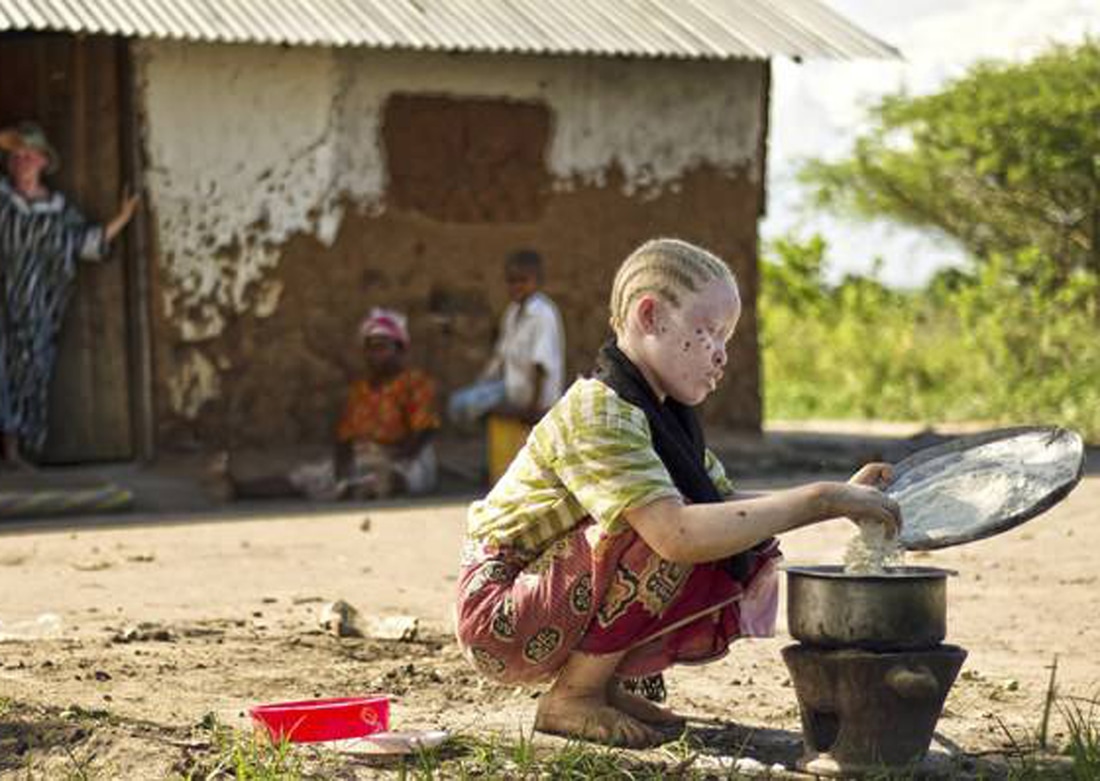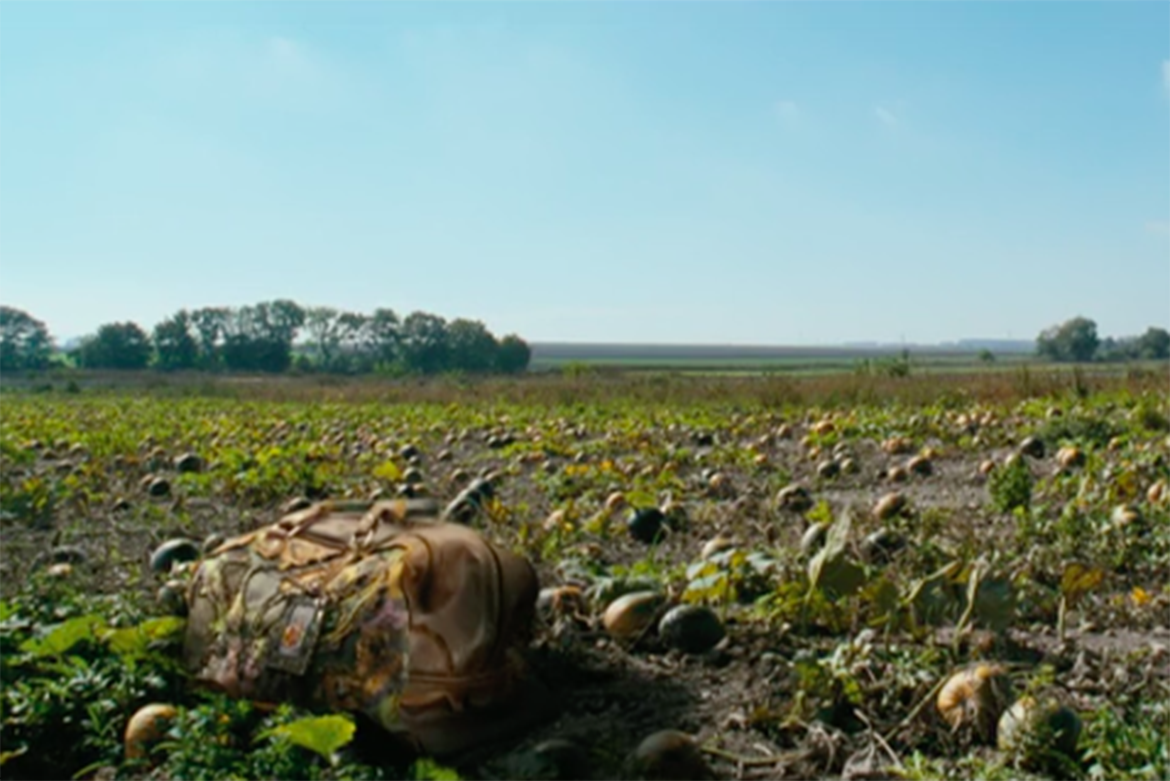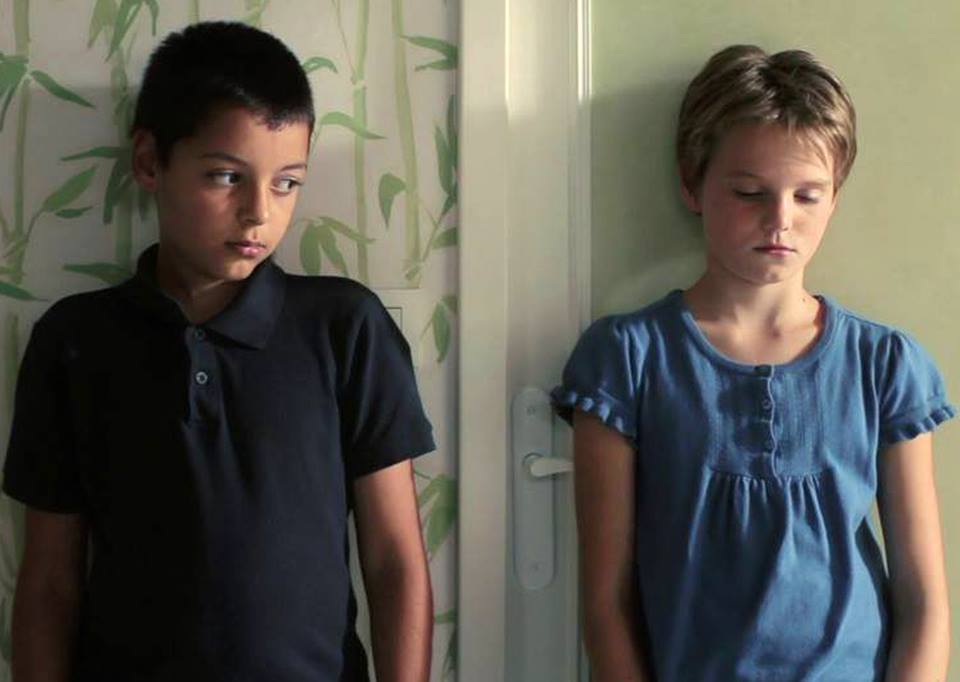curator's noteFor the final MUBIVIEWS of the summer, our writers to consider Vic Sarin’s THE BOY FROM GEITA (2014), a harrowing documentary that examines albinism within Tanzanian culture and the people that are persecuted because of it. DEATH OF THE AUTHORSUMMER MANNINGTHE BOY FROM GEITA (Vic Sarin 2014) features testimonials from people with albinism who have suffered persecution and physical violence. In the documentary, the eponymous boy, Adam Robert and a Tanzanian woman named Mariamu Staford both describe how they were mutilated. The audience later learn that this was part of the barbaric industry of witchdoctors using albino body parts to create strong potions which superstition dictates will bring luck and wealth. The director intended to build tension by cutting between Adam and Mariamu’s stories, however this is disorienting for the viewer. While the editing of the piece causes confusion throughout, it is especially prevalent in the recreations of the violence. Recreated scenes are used to present the events that Adam and Mariamu describe, such as point of view shots of an attacker with a weapon walking through a house which are intertwined with the narration. As the editing quickly cuts between them, it becomes increasingly difficult to understand the nuances of the individual stories. While Sarin perhaps chose this technique to illustrate the similarities between the stories, it is ineffective and may have had a bolder impact had the interviews been shown one after the other as it would make more sense to the audience. THE BOY FROM GEITA suffers from issues with editing from the beginning. Key figures are suddenly introduced and each simply begin by talking, with little initial explanation as to who they are or where they fit within the narrative. It is detrimental to the film that the details of each person’s significance are revealed gradually. This is unconventional for a documentary and off-putting as it defies audience expectation of the genre in a jarring fashion. Sarin’s reasoning for making those editing choices no longer matters when the final product is delivered to the audience, as we all take our own interpretations from the text. Attempting to evoke sympathy, THE BOY FROM GEITA’s illogical editing style only manages to confuse its viewer. Every day this week a different writer will provide their perspective on our MUBIVIEWS film and each post will be open to comments from our readers. Watch THE BOY FROM GEITA on mubi.com until 13 July 2017 and join the discussion!
0 Comments
curator's noteThis week our writers peruse the psychedelic and hone in on the hallucinative in their exploration of Michael Glawogger's absurd Austrian stoner comedy CONTACT HIGH (2009). WHAT'S IN THE BAG?GEORGE LEEThe MacGuffin, popularised by Alfred Hitchcock, is a plot device used to drive the narrative forward that usually has no other explanation or meaning. The main point of a drug-fuelled romp such as CONTACT HIGH (Michael Glawogger 2009) is to use the medium of film to demonstrate the effects of psychotics. Therefore, a MacGuffin is a necessity so that characters have something to do other than just get high. In this film, the MacGuffin is a bag. The contents and the purpose of the bag are left a mystery, other than it needs to be returned to a stereotypical gangster type. At one point or another nearly all the character are tasked with retrieving the bag. This means Max (Michael Ostrowski) and Johann (Raimund Wallisch) are involved in all kinds of hijinks, such as mistaken bags and awkward car chases, all because of the mysterious bag. It is easy to imagine that if the bag were removed from the plot entirely there would not even be a movie. This shows what a crucial plot point MacGuffins are. In the final scene of the film, the bag is opened only to keep its true contents hidden. What comes out is a visual display of fairies, mushrooms and butterflies. It might be interpreted that the bag itself contained drugs as Max and Johann were trying to return the bag to a drug dealer. However, it seems more likely that the inside of the bag is a drug trip and represents the film itself; the bag is nothing more than an excuse to show these visual representations of getting high. What is in the bag is actually meaningless in this kind of narrative; the bag is only needed for this kind of meandering story to give it some semblance of story. Every day this week a different writer will provide their perspective on our MUBIVIEWS film and each post will be open to comments from our readers. Watch CONTACT HIGH on mubi.com until 19 May 2017 and join the discussion!
curator's noteFor the MUBIVIEWS debut film we wanted to challenge our writers by discussing the sensitive topic of gender exploration, which is so rarely seen from a child’s point-of-view. The film in question is French social realist drama TOMBOY (Céline Sciamma 2011) about a ten-year-old tomboy who passes as a boy to her friends throughout the course of the summer. The unfamiliar setting for the protagonist Laure (Zoé Héran) allows her to safely experiment with her gender through her persona Mickäel. The film tackles isolation, identity and friendship in a tone which MUBI itself describes as ‘delicate and insightful’ highlighting the innocence behind the film. PLAYING THE BOYMATTHEW WEARSTOMBOY (Céline Sciamma 2011) is a film that documents the gender exploration of Laure (Zoé Héran), a ten-year-old girl who adopts the name Mickäel after moving into a new neighbourhood during the summer holidays. The film tackles an issue that has been displayed on our screens in such a dark manner time and time again with films such as the uncompromising realist drama BOYS DON’T CRY (Kimberly Peirce 1999) and more recent romantic biographical drama THE DANISH GIRL (Tom Hooper 2015). TOMBOY instead opts for a more light-hearted, almost consequence-free approach, but offers as poignant a social commentary as any film of its type. The light-heartedness is completely intentional. The question of whether Laure is merely experimenting or whether this is something more is asked throughout the film. The hot, sweaty, summer that never ends backdrop acts as a narrative tool to foreground the idea that this all may just be a phase for Laure. As the summer draws to a close, so does her exploration of gender. It is often difficult to distinguish between what is sexual exploration and what is in fact play. The scene in which Laure's younger sister Jeanne (charmingly played by Malonn Lévana) applies make-up to her older sibling blurs this line even further as we are made aware that Laure’s actions may just be light-hearted childlike behaviour. As Laure’s mother parades her across town in a dress, her acknowledgement “I don’t mind you playing the boy, it doesn’t even make me sad” makes it hard to look at TOMBOY as anything other than a commentary on transgenderism. The film makes links between play and real life, offering an insight into how “playing the boy” as a child is socially acceptable but anything more than this and it becomes a serious, almost punishable offence. TOMBOY is a story that could have easily gone down a melancholy route but it would have lost its real impact. It really is refreshing to see that this is a child who has been nurtured by her family; a child who has not experienced a broken upbringing. This is a film that challenges these narratives approaches and, in doing so, reveals a debate that is really rather unique. Every day this week a different writer will provide their perspective on our MUBIVIEWS film and each post will be open to comments from our readers. Watch TOMBOY on mubi.com until 3 April 2017 and join the discussion!
|
MUBIVIEWSOne MUBI film, five perspectives, endless possibilities. Archives
July 2017
Categories
All
|





 RSS Feed
RSS Feed
